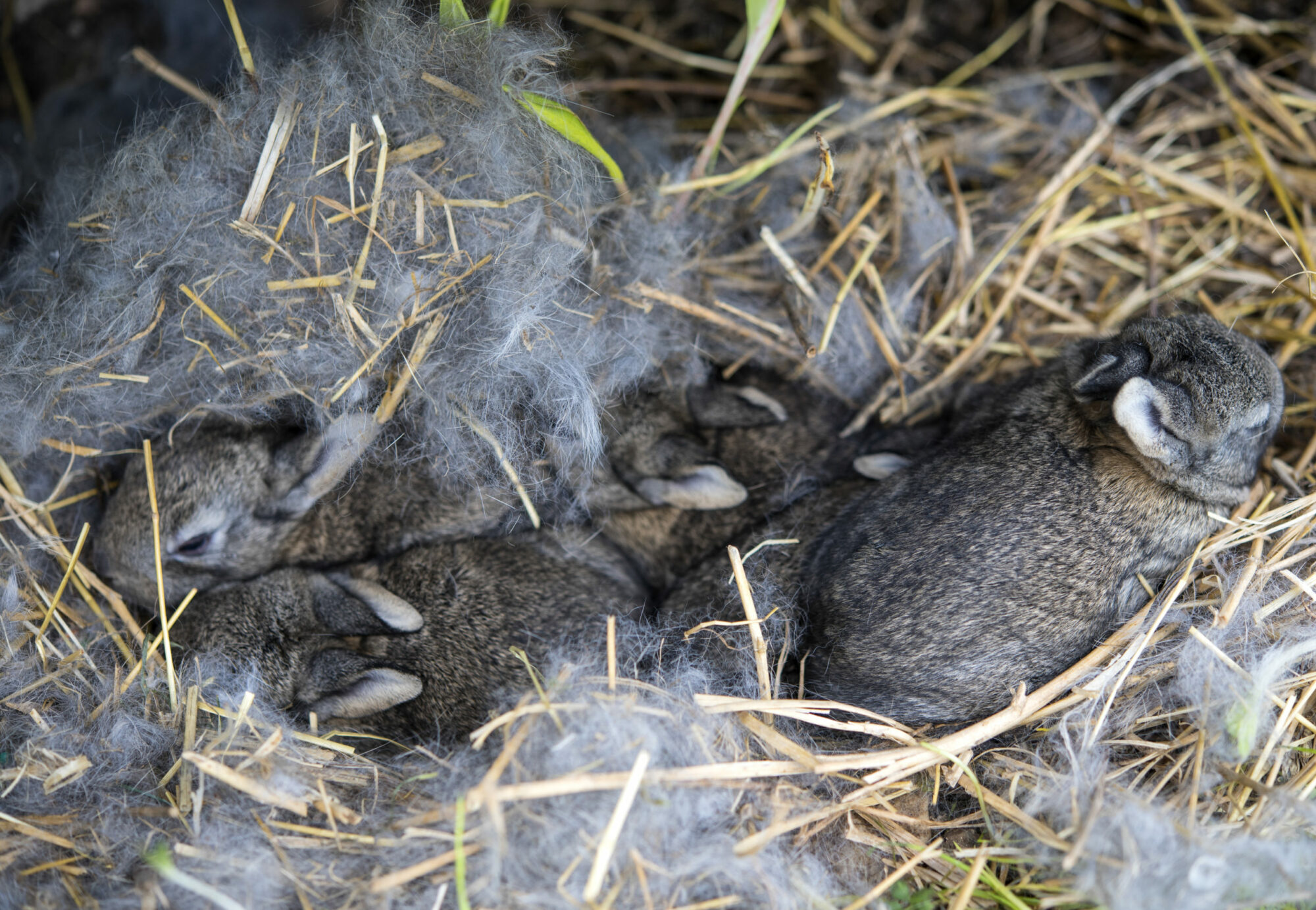Biology of the Rabbit Oryctolagus cuniculus
(content copied from – National Pest Control Agencies Rabbit Guide)
Rabbits of European or Australian origin were released in New Zealand during the 1850s. By 1876, numbers had increased and were widespread enough to cause concern in some areas. Rabbits spread rapidly and numbers peaked in 1890. Rabbits competed for grazing, causing disastrous reductions in sheep numbers for many property holders. Rabbit numbers have fluctuated since, with peaks in the 1920s and in 1946, after World War II. Rabbits of both genders are alike but females (‘does’) have narrower heads. Coat colour is mainly buff sprinkled with black, a reddish neck, white underparts and black fur on the upper tail with white below. There is much colour variation in body fur, from white to light sandy to black. Length of adults is up to 400 mm and weight is 1400 to 2500 gm.
Rabbits commonly occur in areas of lighter soils; in open country, among scrub, in rocky places and in plantations. Good rabbit habitat has less than 1000 mm of rain per year, a sunny aspect, light soil, good drainage and shelter. Rabbits live in colonies or warrens with a strict social hierarchy. Warrens can be extensive and consist of an interconnected system of burrows with several entrances. They can also live above ground in dense scrub or rocky terrain. They are nocturnal and active in twilight, spending most of the day below ground and emerging above ground in the late afternoon. Home range is 2-3 hectares, with males tending to have a larger area. They make well marked runways and deposit faeces or urine at communal latrines or in mounds (known as buck heaps). Rabbits re-ingest special faecal pellets, principally during the day. These soft pellets are small, dark and membrane-covered, and are swallowed whole from the anus without breaking the membrane. Inside the membrane there is a high bacterial content and undigested cell walls of plant food grazed by the rabbit. The bacteria continue to ferment the vegetable content until the membranous wall dissolves and the contents mingle with the freshly ingested plant material. This releases phosphorus, sodium, potassium and lactic acid to aid digestion and nutrition. The process is similar to rumination in sheep and cattle.
Daily food requirement is approximately 500 gm wet weight of vegetable matter. They can survive on a fibre content of 30% but require green growing feed for reproduction. Under favourable conditions, rabbits breed throughout the year. On semi-arid lands the main breeding season is spring to early summer. Gestation is 28-30 days, and young are born in a specially prepared burrow chamber (“stop”) lined with grass and with fur plucked from the mother’s belly. The female usually becomes pregnant within 12 hours of giving birth and may produce three to seven litters in a year. 6 Average litter size is 5-6. Changes in the length of the breeding season between regions affect the potential number of young born per female. Where there are more improved pastures, breeding will be almost continuous through the year, with a potential 37 – 47 births per female per year. In the drier, less productive areas of Central Otago, breeding is concentrated over a short period and a potential 23 potential births per female per year.
Pregnant rabbits can reabsorb embryos, usually when pressure of numbers begins to limit resources. Embryos are absorbed at about mid-term over a period of 2-3 days. It is part of the complex self-regulating fecundity mechanism of the rabbit. This process is less wasteful than abortion as the reabsorbed material is recruited into the doe’s reserves.
The kittens are born hairless, blind and deaf. At one week they are furred, with eyes open and claws and incisors evident. Weight is 30-40 gm at birth, and 300 gm at 3-6 weeks. The female suckles the young once a day for about 30 days after which they can look after themselves. Initially the doe closes the burrow (breeding stop) at each visit but as her young grow she leaves the nest open. Growth of the young continues for nine months and sexual maturity is reached at 3-4 months.
Average life expectancy for feral rabbits is 18 months, though in captivity they can live up to eight years. In North Canterbury and Hawke’s Bay most wild rabbits die in the first 18 months. In semi-arid areas, 5-30% of samples collected in winter were over two years old. The most likely causes of mortality are coccidiosis, RHD (Rabbit Haemorrhagic Disease), predation and drowning.
Young rabbits of up to three months of age are extremely susceptible to coccidial infection, but infection levels are low by seven months. RHD can cause significant mortality after ten weeks of age. Predation is by cats, ferrets, stoats, weasels and harrier hawks. The extended rabbit breeding seasons in most areas provide abundant prey over a long period to support a high density predator population. In the semi- arid regions, predator numbers and their potential to regulate rabbit populations are reduced due to the restricted rabbit breeding season of a few months, the lack of alternative prey and the harsh winters.


